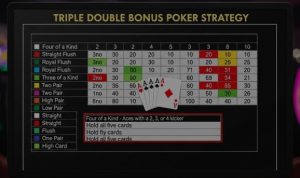Micro-Stakes Fundamentals
Micro-stakes No-Limit Hold’em serves as the training ground where most profitable poker careers begin. These games typically range from $0.01/$0.02 to $0.10/$0.25 blinds and feature opponents who make frequent, exploitable mistakes. The key to success at these stakes lies not in fancy plays or difficult theory, but in executing solid fundamentals consistently.
Most players at micro-stakes fall into predictable patterns. They call too often with weak hands, chase draws without proper odds, and fail to fold when facing aggression. Your primary objective is to identify these tendencies and adjust your strategy accordingly. This approach generates steady profit while building the bankroll and skills needed for higher stakes.
Building a Solid Preflop Strategy
Your preflop decisions form the foundation of profitable micro-stakes play. Start by playing tight ranges from early position, opening only premium hands and strong broadway combinations. As you move toward the button, gradually expand your range to include suited connectors and medium pocket pairs that can flop big hands.
Position matters more than most beginners realize. Playing in position allows you to see how opponents act before making your decision, giving you an information advantage on every street. From the cutoff and button, you can profitably open a wider range because you’ll have position throughout the hand.
The three-betting strategy at micro-stakes should focus on value rather than bluffs. Your opponents will call three-bets too frequently with weak hands, making bluffs less profitable. Stick to premium hands like big pocket pairs and strong ace combinations when building the pot preflop.
Postflop Play for Maximum Value
After the flop, your goal shifts to extracting maximum value from weaker hands while minimizing losses with marginal holdings. Micro-stakes players often make the mistake of either betting too small with strong hands or calling down with weak pairs hoping to catch a bluff.
When you flop a strong hand, bet for value immediately. Most micro-stakes opponents will call with any piece of the board, so there’s no need to slow play or trap. Size your bets to get called by worse hands while building a pot that reflects your hand strength.
Continuation betting on the flop should be selective rather than automatic. Fire continuation bets on dry boards where your range has significant equity advantages. On wet, connected boards, check more frequently with hands that need help to improve.
Turn play separates winning players from break-even ones at micro-stakes. Many opponents will call one street hoping to hit their draw or catch a bluff. When you fire a second barrel on the turn, you’re representing a hand strong enough to bet twice. Size this bet larger than your flop bet to charge the draws the maximum price and build pots with your value hands.
Reading Opponents & Taking Notes
Micro-stakes players exhibit consistent tendencies that skilled players can exploit. Some opponents never fold to continuation bets, while others fold too easily to aggression. Pay attention to showdown hands and note how opponents played various situations.
Look for players who limp frequently into pots. These opponents typically have weak, passive tendencies that make them ideal targets for isolation raises. When you see a limper, raise with a wider range than your standard opening range to play heads-up pots in position against a weak range.
Aggressive players who raise too frequently present different opportunities. These opponents often overvalue their holdings and continue bluffing on multiple streets. Against these players, adopt a more calling-focused strategy with medium-strength hands, allowing them to bluff off their stack.
Bankroll Management at Micro-Stakes
Proper bankroll management ensures you can withstand downswings without going broke. For micro-stakes cash games, maintain at least 30 buy-ins for your current stake. This buffer protects you from variance and prevents the emotional decisions that come from playing scared money.
Moving up in stakes requires discipline and patience. Only advance to the next level after consistently beating your current stake over a significant sample size. Most professionals recommend at least 50,000 hands of winning play before attempting to move up.
Common Mistakes to Avoid
New players often make costly errors that prevent profitability at micro-stakes. Playing too many hands from early position destroys win rates because you’re constantly playing out of position with weak ranges. Stick to premium hands from the first three seats and watch your results improve.
Overvaluing the top pair is another frequent leak. Just because you have the best pair doesn’t mean you have the best hand. When facing significant aggression on later streets, consider folding hands like top pair with weak kickers, especially against tight opponents who rarely bluff.
Chasing draws without proper pot odds burns through bankrolls quickly. Before calling with a flush draw or straight draw, calculate if the pot offers sufficient odds to make the call profitable long-term. If you need to hit one of nine outs and the pot lays you worse than 4-to-1, fold and save your chips for better spots.
Transitioning to Higher Stakes
As your skill develops and your bankroll grows, you’ll eventually outgrow micro-stakes. The transition to small stakes requires adjustments to your game. Opponents at higher levels make fewer obvious mistakes and exhibit better hand reading abilities.
Start incorporating more balanced strategies as you climb the stakes ladder. While exploitative play dominates micro-stakes, higher-level opponents will notice and counter your tendencies. Develop a baseline strategy that’s difficult to exploit, then make adjustments based on specific opponent tendencies.
Success at micro-stakes comes from executing fundamental strategies consistently while avoiding major mistakes. Master these basics, manage your bankroll conservatively, and you’ll build the foundation for a profitable poker career at any stake level.







